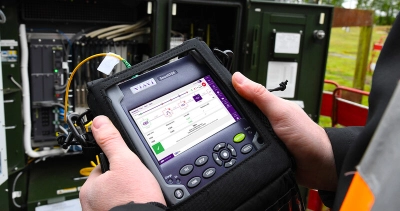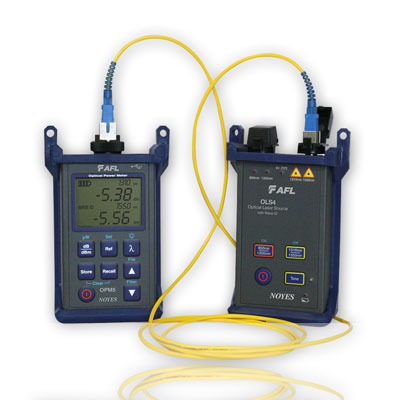Industries use fibre testing equipment to maintain product reliability.
Unveiling the Trick Use Optical Fibre Checking for Efficient Data Transmission
In the world of modern communication, optical fiber testing arises as an essential method for enhancing data transmission. Recognizing the diverse applications of optical fibre screening invites a deeper exploration right into its crucial role in shaping the future of data interaction.

Significance of Optical Fibre Testing
The relevance of optical fibre testing can not be overemphasized, as it works as an essential component in making certain the reliability and performance of data transmission systems. In an era where high-speed interaction is paramount, any shortages in fibre optics can lead to substantial information loss and lowered efficiency. For that reason, rigorous testing protocols are important to confirm the stability and performance of optical cords.
Evaluating enables for the identification of flaws such as micro-bends, macrobends, and splice losses that could impede signal top quality. It gives insights into the general attenuation and transmission capacity capabilities of the fibre, making sure that the network satisfies specific operational requirements. Regular testing not just enhances system performance but additionally extends the life-span of the facilities by recognizing potential concerns prior to they intensify right into expensive failings.

Kinds Of Optical Fiber Tests
Numerous sorts of optical fiber examinations are carried out to guarantee the efficiency and reliability of fibre optic networks. These examinations can be categorized right into several crucial kinds, each serving a details objective in assessing the honesty of the fibre.
First, Optical Time Domain Reflectometry (OTDR) is a prominent test that recognizes mistakes, entwines, and connectors within the fiber. By sending out pulses of light and examining the mirrored signals, technicians can identify issues along the fiber's length.
Second, insertion loss examinations assess the quantity of signal loss when light travel through ports or splices, which is critical for maintaining network effectiveness.
Third, return loss examinations determine the amount of light reflected back in the direction of the resource, supplying insights right into the high quality of connections and potential resources of interference.
Additionally, connection tests make certain that the fiber course is complete, permitting service technicians to verify that the fibre is intact with no breaks. robotic vision.
Finally, aesthetic mistake locators use noticeable light to identify breaks or extreme bends in the fibre, assisting in fast troubleshooting. Jointly, these examinations form a comprehensive method to keeping ideal performance in fibre optic networks.

Applications in Network Maintenance
In modern telecoms, reliable network maintenance relies heavily on find this optical fiber testing to determine and correct issues immediately. Normal testing ensures that the network runs at ideal efficiency degrees, reducing downtime and enhancing individual experience.
Among the primary applications of optical fibre screening in maintenance is the detection of faults, such as breaks, flexes, or inappropriate connections. Methods like Optical Time Domain Reflectometry (OTDR) allow specialists to find these issues properly and examine the quality of the fibre link. Furthermore, loss testing confirms the stability of the optical path, ensuring that signal attenuation stays within acceptable limits.
Regular maintenance testing also assists in safety nets, determining potential problems before they intensify right into significant failures. This aggressive approach can save organizations both time and funds. Additionally, throughout upgrades or developments, optical fiber screening ensures that brand-new installations integrate perfectly with existing infrastructure.
Enhancing Data Transmission Reliability
Efficient network upkeep through optical fibre screening not only addresses instant problems but additionally plays a substantial duty in improving data transmission dependability. By recognizing mistakes, determining signal loss, and assessing the total condition of fiber optic cords, screening guarantees that possible troubles are rectified prior to they escalate into considerable disruptions.
Normal optical fiber testing, such as time-domain reflectometry (TDR) and optical time-domain reflectometry (OTDR), allows technicians to determine the specific locations of breaks, flexes, or port issues within the network. This aggressive approach not only minimizes downtime but likewise optimizes the performance of data transmission by making sure that the pathways for signals are clear and working successfully.
Furthermore, screening aids in validating adherence to market standards and specs, which is crucial for preserving the integrity of data flow. By making certain that each connection fulfills needed thresholds for loss and top quality, companies can boost their confidence in get more the dependability of their data networks.
Eventually, purchasing extensive optical fiber testing not only boosts information transmission reliability yet also supports the long-lasting operational performance of interaction facilities.
Future Trends in Fiber Testing
Arising technologies are poised to revolutionize fiber screening, leading the way look here for boosted efficiency and accuracy in information transmission diagnostics (optical fibre testing equipment). As the need for faster web and higher data transfer remains to rise, the assimilation of innovative devices such as expert system (AI) and artificial intelligence (ML) is readied to transform conventional fibre testing techniques. These innovations will certainly make it possible for predictive maintenance and automated fault detection, dramatically minimizing downtime and improving network reliability
Furthermore, the fostering of Net of Things (IoT) devices will facilitate real-time monitoring of fiber networks, permitting for prompt recognition of efficiency issues. This change in the direction of proactive administration will lessen interruptions and optimize data flow.
Additionally, developments in optical time-domain reflectometry (OTDR) and brand-new testing criteria will improve the accuracy of measurements, making sure that data honesty is kept throughout the transmission procedure. The advent of 5G technology likewise necessitates the advancement of more innovative fiber screening techniques to support its high-speed requirements.
Final Thought
In final thought, optical fiber testing is important for preserving efficient data transmission within interaction networks. Normal screening not just makes sure compliance with industry criteria yet likewise assists in positive maintenance, inevitably contributing to the lasting dependability and performance of fibre optic systems.